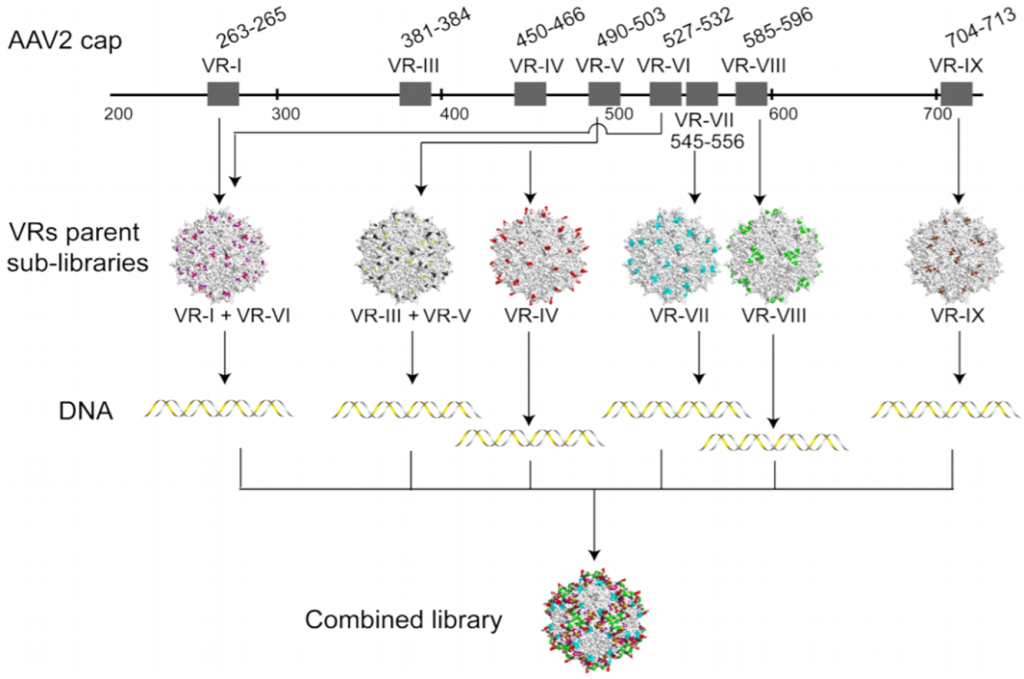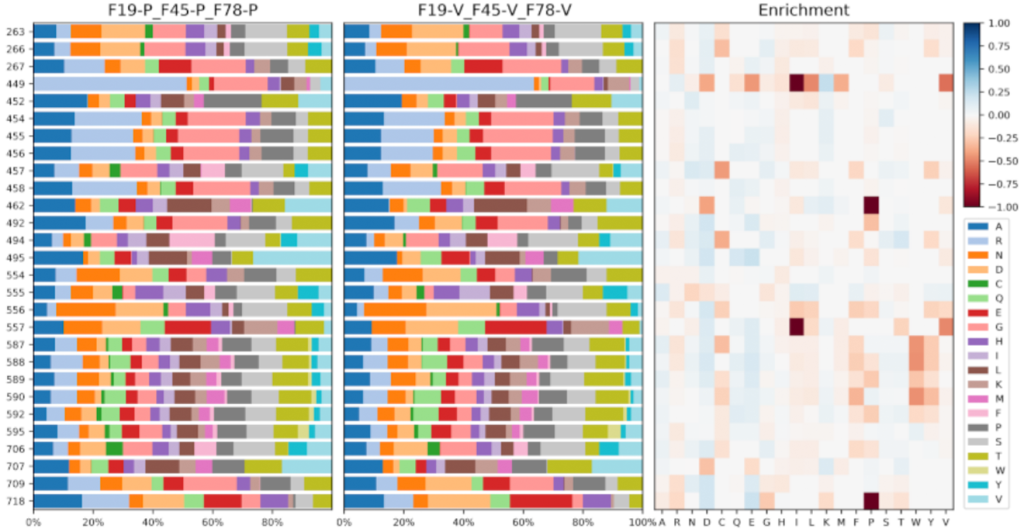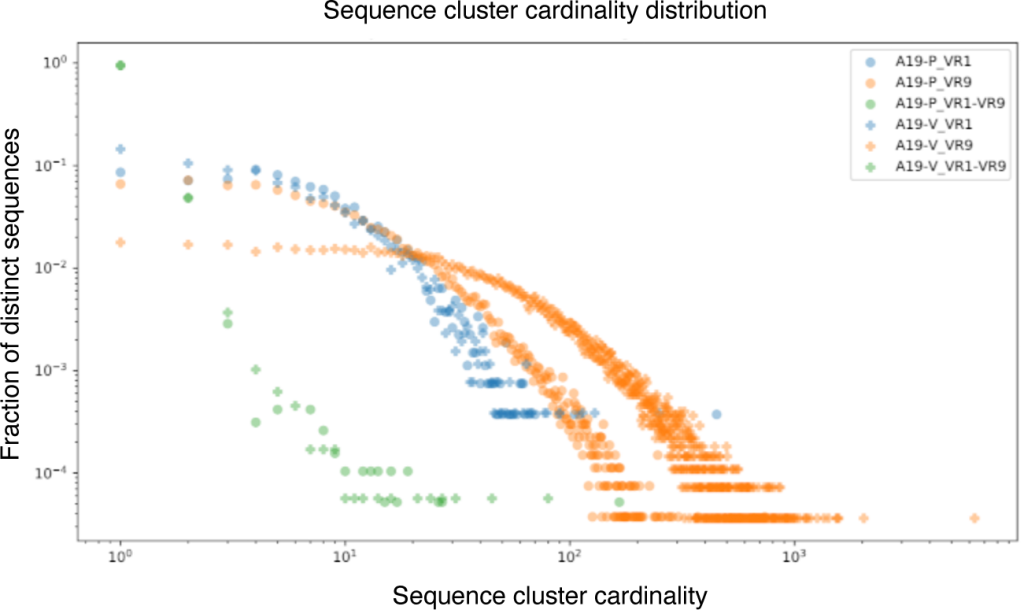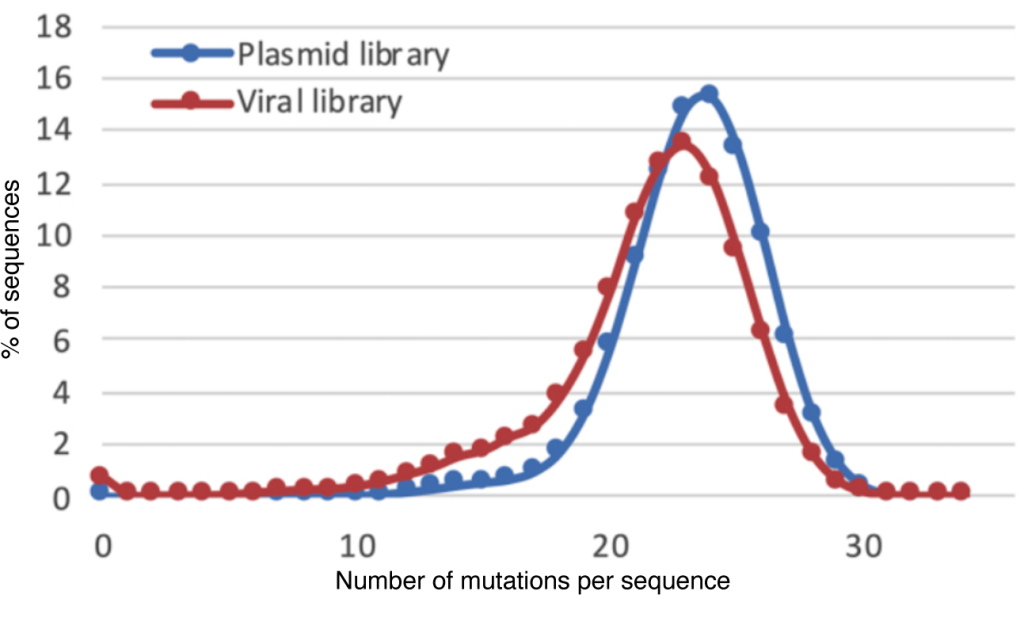Evolution
Our proprietary episomal DNA extraction method screens only infectious variants and effectively removes background noise. With powerful data analysis, candidate variants can be identified after just a few rounds of in vitro or in vivo selection. After thorough evaluation and characterization, capsid variants with improved properties are then validated.
Workflow
Library Design and Construction- Library QC and Refinement-Screening-Variant Refinement- Data Analysis- Variant Characterization
Library Design and Construction
Most AAV capsid libraries use a combination of 3 approaches: error-prone PCR, DNA shuffling, and random peptide insertion. These approaches are prone to disadvantages such as low complexity, likeliness to not evade preexisting human antibodies, and inability to improve other properties.
The approach that Porton Advanced uses consists of diversifying selected surface positions in an iterative manner to successfully address these limitations.
- Rational Design
- Directed Evolution
- Rational Design & Directed Evolution
- Rationally Designed Capsid Libraries
- Library QC and Refinement
Apply knowledge of epitopes, cell surface receptors, binding peptides, etc. to design new capsids with desired properties.
- Harness the power of evolution to engineer improved capsids using capsid libraries.
- Design strategies for library design, complexity, and selection.
- Use directed evolution to improve rationally designed capsids.
- Refine evolved capsids using rational design.
- Rationally design capsid libraries for directed evolution.
- Designed based on 3D structure and bioinformatics
- Precise modifications at carefully selected positions
- Incremental construction to maximize compatibility with capsid assembly
- Diversification covering a wide range of surface regions
- High complexity
- Heightened probability of generating novel tropism due to the large number of simultaneously mutated positions
- Better evasion of preexisting neutralizing antibodies than any other approach

- Each region of each library and sub-library, at both the plasmid and viral levels, is analyzed by Illumina sequencing using our own bioinformatics software.
- If needed, changes are made to the design or construction strategy to improve the library’s complexity.

Example of amino acid distribution and enrichment analysis. The y-axis shows variable amino acid positions. Each color on the left 2 panels represents a different amino acid. The x-axis for the 2 left panels shows the distribution of amino acids at each variable position. The right panel is a heat map showing the positive (in shades of blue) or negative (in shades of red) amino acid enrichment at each variable position. The x-axis on the right side lists the 20 amino acids. Ideally, as in this example, the amino acid distribution should not vary too much between the plasmid (left) and viral (center) libraries, resulting in a mostly white heat map.

Example of sequence cluster cardinality distribution analysis. The x-axis shows the sequence copy number while the y-axis shows the fraction of distinct sequences existing at that copy number. An ideal library would show as an almost vertical line, with plasmid and viral libraries very close to each other, as seen in the blue and green examples above. Three capsid libraries are shown here, each at both plasmid (-P) and viral (-V) level.

The average number of mutations per sequence is another library (or variable region) characteristic. Ideally, at the plasmid level, it should be close to the library design, and, as in this example, it should not vary too much from plasmid to viral library.
Highlights
Based on the platform, Porton Advanced provides ready to use capsid variants and capsid variants. Click here to explore how to collaborate with us.
